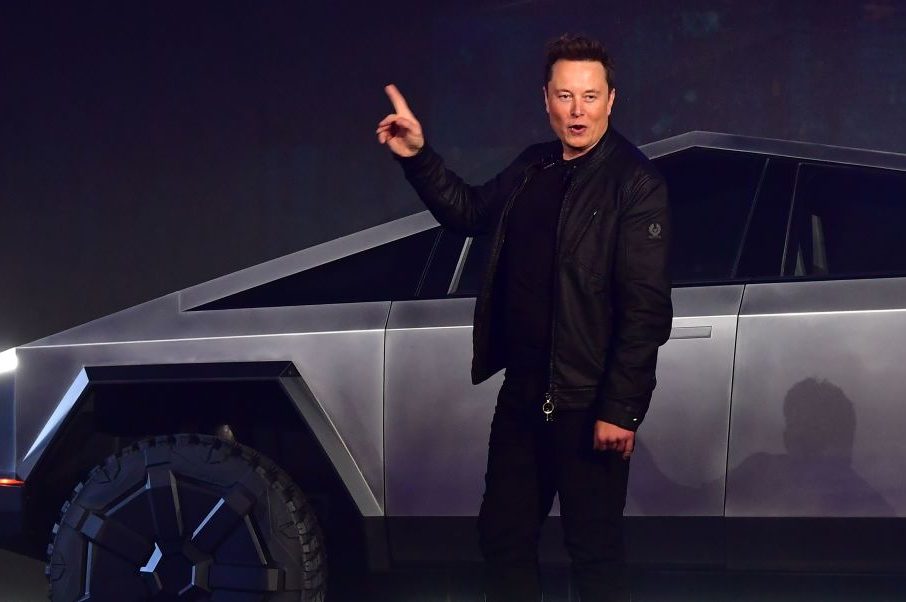The Cybertruck is here. Finally. Maybe. Sort of.
Thursday was the “Cybertruck Delivery Event,” where they finally rolled off the production line and were handed over to waiting customers. Musk served as chaperone, host and speaker, and the event was a hype-fest for fanboys. As the presentation started, it was hard to tell whether some in the crowd were shouting “Elon” or “hallelujah” (I think the latter). He presented a polished marketing video, markedly sparse on specs, but promised that the Cybertruck was one of those rare products that change how we see the world; that it is “more truck than truck,” while also being “a better sports car than a sports car” and the best product Tesla had ever made.
It’s not.
Despite being a “delivery event,” only ten customers drove away with theirs. Every other potential Cybertruck owner will still have to wait until next year at minimum to receive theirs; and that’s only if they drop $100,000 on the top of the line “Cyberbeast.” Most customers will be waiting until 2025 or 2026.
Musk has said that he always wants the final production version of a product to exceed what was initially advertised. That isn’t true here. In 2019, the Cybertruck was promised to release in three skews, at $40,000, $50,000 and $70,000, and have 500 miles of range. But inflation is a bitch.
The $100,000 Cyberbeast comes with 845 horsepower and 10,296 pound feet of torque, tops out at 130mph, can tow 11,000 pounds and does 0-60 in under three seconds. It’s damn cool, but it better be for $100,000, and it only has 320 miles of range.
The next option down is the best to buy, the “All-Wheel Drive,” which has similar range and towing capacity, but drops to 600 horsepower, 4.1 seconds 0-60 time and costs $80,000 ($30,000 more than initially advertised). Finally, the entry-level two-wheel-drive Cybertruck — which Tesla’s website says will be “available in 2025,” but won’t — has only 250 miles of range and a far more conventional 6.5 second 0-60 time. It has no stated power figure, torque figure, top speed or towing capacity (either because those numbers are not great, or because they haven’t figured out what it’ll be yet); and though Tesla’s configurator says it starts at $49,880, an asterisk informs you that this is assuming it receives a $7,500 federal tax credit and “estimated gas savings of $3,600 over three years.” The actual sticker price is $61,000.
The Cybertruck caused shock when it was announced in 2019. Everyone knew Tesla was going to enter the lucrative pick-up truck space — after all, the Ford F-150 remains the bestselling vehicle in America — but most expected a conventional-looking truck, not the metallic, polygonal, unpainted DeLorean truck of our dystopian future. To some, it’s the most hideous car ever produced; and the short front, disproportionally small wheels, long windscreen and oversized windscreen wiper don’t help that. From some angles, it looks like a bad kit car, particularly given Tesla’s infamously bad panel gaps. But to me, it’s one of the most badass, dramatic vehicles ever to reach production (ignoring the utterly bland, characterless interior). It’s a mad Giugiaro concept car for a Seventies sci-fi film with an insane light signature, but you’ll actually be able to buy it.
As someone obsessed with car design, I understand the urge to own one. But most potential customers shouldn’t. Despite the radical looks, there isn’t a lot here. And what’s unusual about the Cybertruck just makes it worse.
Its polygonal shape was supposed to be easier to manufacture, thus reducing costs. But Musk decided to make the Cybertruck out of a proprietary bullet-proof steel composite, which is so tough that it can’t be stamped as “the body panels would break the stamping machine.” This undoubtedly contributes to the Cybertruck’s enormous 6,850-pound curb weight and will make repairs and replacement panels heinously expensive. Given that Tesla has a reputation for poor, overpriced service charges — a Model S owner was quoted $18,000 for a replacement battery the other day — this will take that to a new level. And yes, the panels will break and get dinted, as the crash safety videos showed; crumple zones are a necessity.
What do you get for this added cost, weight and repair anxiety? The gimmick of being able to shoot your truck. Cool.
If for the look, it’s hard to tell why you’d buy a Cybertruck over another electric truck. The Ford F-150 Lightning is more conventional, practical, affordable and is actually on sale. You can buy one today. The Rivian R1T is just as powerful and has just as good tech, but is more conventionally attractive, cheaper and has better range. And they’re available to buy now too. But what if you want something ridiculously large, extremely powerful, very heavy and unpractical, but stylish? Well, the Hummer EV (which Musk conveniently ignored in his presentation) does the job better than the Cybertruck. It’s actually more powerful and — crucially — is available now. And if you want an truck that truly takes advantage of the unique benefits of an EV powertrain, put a deposit down for a Telo MT1, which has a similar bed capacity to the Cybertruck, but within the footprint of a Mini Cooper.
More to the point, if you actually need a truck for your work, you shouldn’t go electric. As I wrote some months back, the price premium for an electric truck is immense (a base combustion F-150 starts at $34,000, whereas the electric F-150 Lightning starts at $60,000), the range collapses with cold weather and as a Ford representative reportedly told Neal Pollack in the Observer, “The 300-mile range is assuming you’re floating on marshmallows while tugged along by a unicorn.” As soon as you start towing anything or use the payload — the point of a truck — the number collapses. And the Cybertruck doesn’t do anything to address these core problems.
The Cybertruck was supposed to revolutionize the truck, bring the future to the present and blow our minds. And maybe, if Musk had spent less time on Twitter sharing boomer memes, he could have made that so. But instead, Musk has made a vehicle perfect for just one customer base: crypto millionaires looking to show off as they cruise through Miami. But, as it took so long to release, all those crypto millionaires are now broke or in jail.
I like the way it looks.
But after a four-year wait, you’d still be better off with your old diesel Ram.


























Leave a Reply